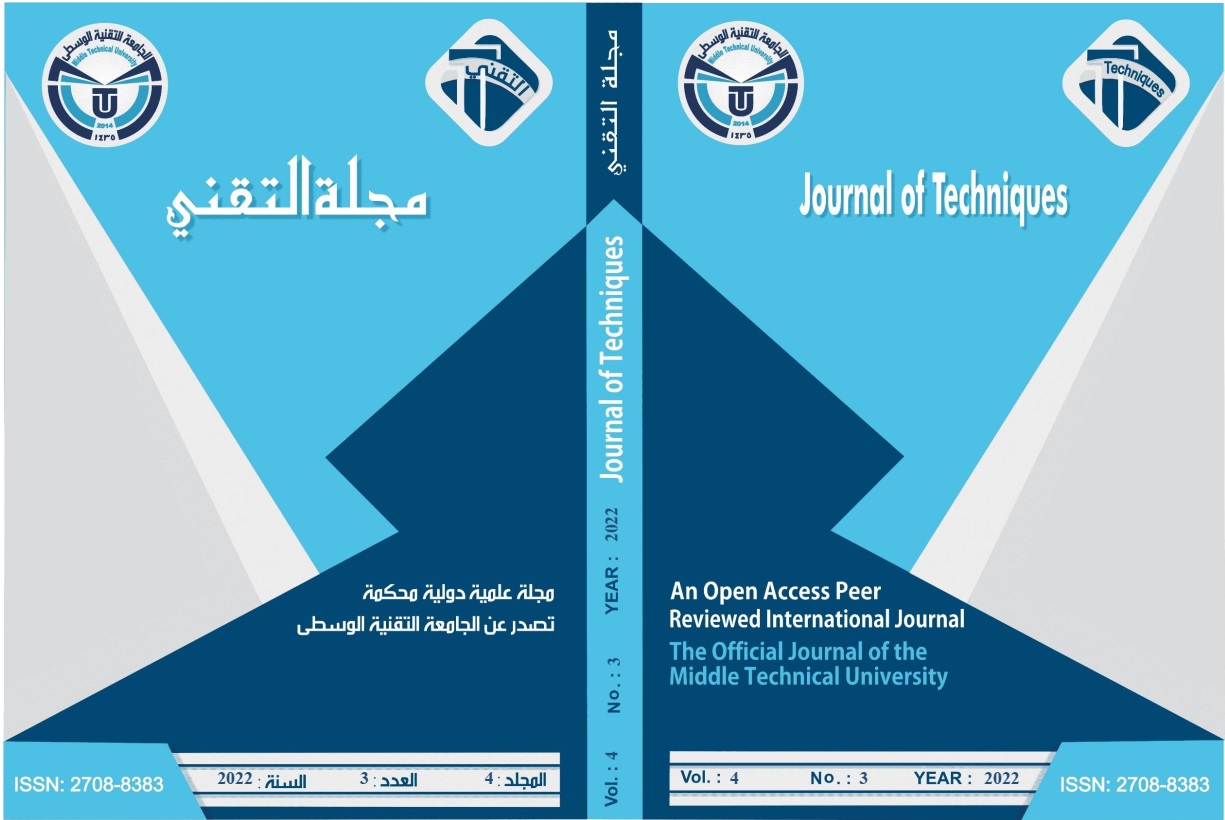Diagnosing the Actual Reality of the Requirements of Ecological Design According to ISO14006:2020: A Case Study in Engineering Reconstruction Office-Iraq
DOI:
https://doi.org/10.51173/jt.v4i3.517Keywords:
Environmental design, ISO14006: 2020, Sustainable development, Green approach, Environmental approachAbstract
The research aims to identify the extent of the commitment of the Department of Engineering Reconstruction to the application of ecological design according to the guiding specification ISO14006:2020 by measuring and diagnosing the gap between the actual reality in the Department of Engineering Reconstruction and the requirements of the specification, and to achieve this goal, the case study approach was adopted, and the checklist was adopted to measure the gap.
Methodology: The study starts from the problem represented by the gap between the actual reality of ecological design in the Department of Engineering Reconstruction and Ecodesign by the requirements of ISO 14006:2020. Prepared by the British Standards Organization (BSI).
Results: The results of the research show that the total rate achieved by measuring the availability of eco-design requirements in the Department of Engineering Reconstruction according to ISO14006:2020 obtained a percentage of (75%) and an implementation rate of (5), meaning that it is close to a fully documented application, which generated a gap of (24%).
The research came out with conclusions, the most prominent of which is that although the research organization understands design and development when integrating eco-design into design and development, it does not have documented information in this regard. Some internal problems in the documentation of some requirements of the standard.
Downloads
References
Al-Khatib, Samir Kamel,(2008) “Total Quality Management and ISO Contemporary Approach”, first edition, Iraq: Dar Al-Murtadha.
Grela, G., (2013), “Does Weighted Averge Really Work?”, Maria Curie_ Sktodowska University, Poland.
Landin, G.A., Saizarbitoria, I.H.,Carrasco, E.C., (2011), “A Case Study of the Adoption of a Reference Standard For ISO14006 in the Lift Industry”, Clean Techn Environ Policy, DOI10.1007/s10098-011-0427-4.
Landin, G.A., & Saizarbitoria I.H., (2011), “Paving the Way for the ISO14006 ecodesign standard: an exploratory study in Spanish ompanies”, G. Arana-Landin, I. Heras-Saizarbitoria / Journal of Cleaner Production 19 (2011) 1007e1015
Ismail, Hadeel, 2016, “The effect of the green marketing mix on consumer behavior for using a product with renewable energy”, an analytical study on a sample of solar heaters users in the city of Amman, Journal of Baghdad College of Economic Sciences, Issue (47).
Jalal, Rahmani Abdel Qader and Abdel Rahman, Fall 2020, “The Interactive Relationship Between Environmental Protection and Sustainable Development”, a memorandum within the requirements for obtaining a master’s degree in law, specializing in public international law, Faculty of Law and Political Science, Zayan Ashour University - Jafla-.
Marjan, Diaa Rafiq, 2013, “Concepts and applications for the possibility of planning and sustainable design in housing”, Journal of Planning and Development, Issue (27).
Saleh, Adnan Manati, 2014, “Sustainable development in the economy between challenges and requirements”, Journal of Baghdad College of Economic Sciences, the special issue of the joint scientific conference.
Abu Al-Azm, Hani Fawzy, 2018, “The concept of environmental design and its impact on the design of metal canopies as one of the light metal construction systems”, Architecture and Arts Magazine, issue (11), Part One.
Abul-Gheit, Shaima Muhammad Saeed Abdel-Gawad, 2021, “The design of umbrellas between heritage and modernity as one of the elements of formation in sustainable environmental design”, Journal of Architecture, Arts and Humanities, Issue (3), The First International Virtual Conference “The Heritage between Humanities and Basic Sciences.”
Muhammad, Hanan Suleiman Issa, 2012, “Methodology of Integrating Sustainable Design Strategies into Building Information Modeling (BIM): Current Possibilities and Future Possibilities”, King Saud University Journal, Volume (24), Architecture and Planning (2).
Ali, 2012, "Simulation of Natural Systems in Urban Sustainability Decisions", Research Papers, College of Engineering, University of Baghdad.
Brenda & Vale R, (2006), “Principles of Green Architecture in Stephen M, Wheeler and Beatley T. Ed”, The Sustainable Urban Development.
Al-Taweel, Akram Ahmed and Al-Abadi, Shahla Salem, 2016, “The Possibility of Adopting Green Design Activity in Pharmaceutical Manufacturing Companies in the City of Mosul: A Comparative Study”, Journal of Administration and Economics, Issue (107).
Oqba, Ihab Mahmoud, 2006, "Environmental Design Entrances Towards Compatibility with Natural Environment Changes" Conference of the Department of Architecture, Faculty of Engineering - Cairo University.
Al-Akkam, Akram Jassem Muhammad and Al-Ani, Enas Walid, 2009, "The Impact of Ecosystems on Urban Planning and Design for Iraq's Cities", Damascus University Journal of Engineering Sciences, Volume (25), Issue (1).
Abdel-Nabi, Farah Muhammad Zaki, 2021, “Evaluation of the considerations of sustainable eco-design in the built environment”, Fayoum University Journal, Faculty of Engineering, Volume (4), Number (1).

Downloads
Published
How to Cite
Issue
Section
License
Copyright (c) 2022 Zainab Mahdi Muhammad, Areej Saeed Khalil

This work is licensed under a Creative Commons Attribution 4.0 International License.
















